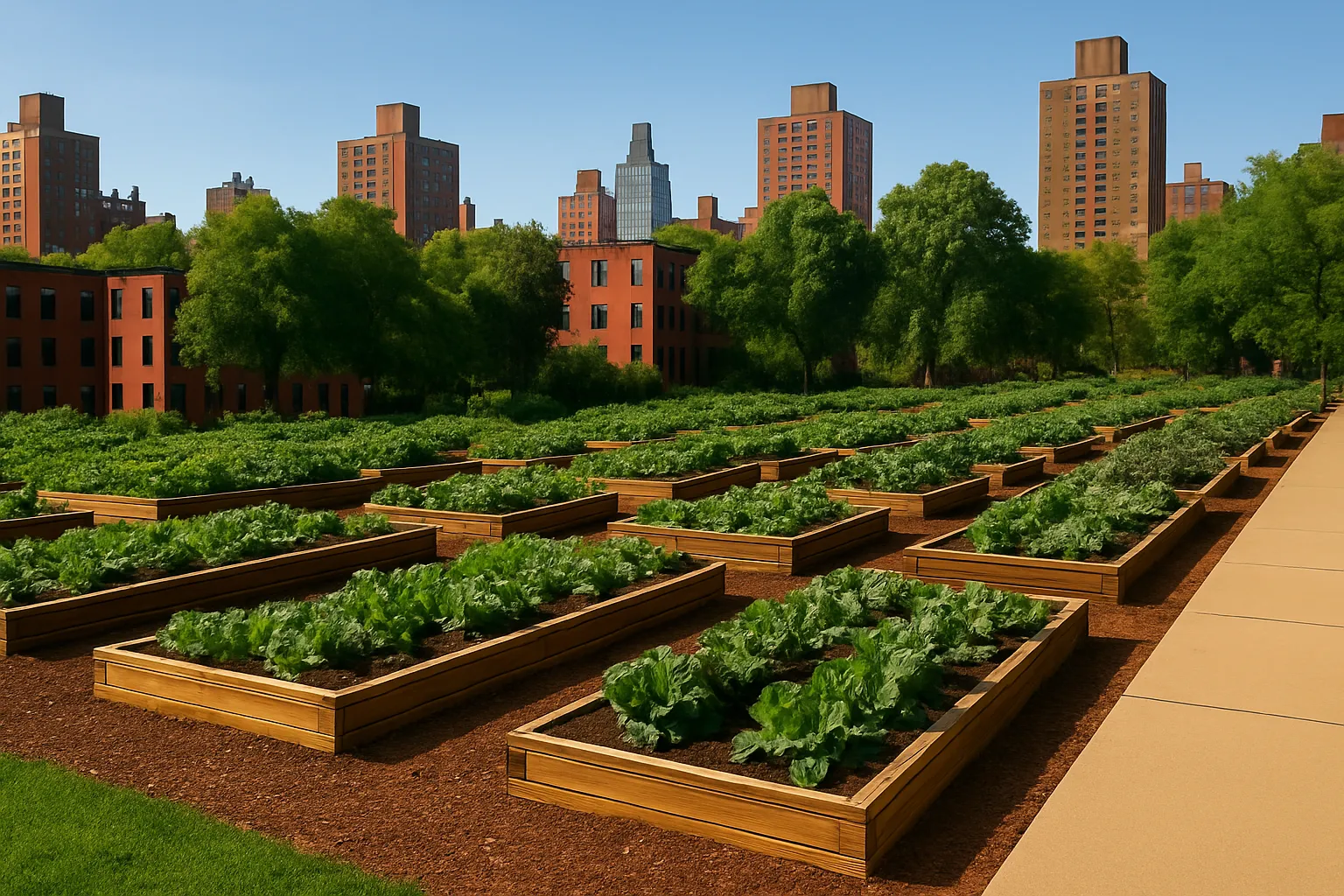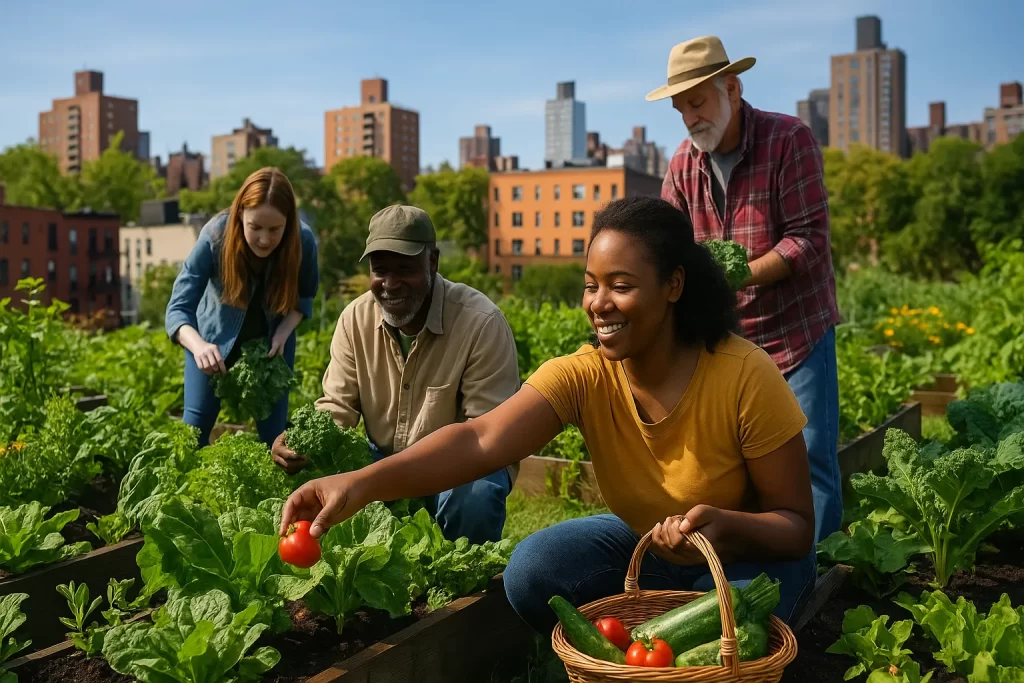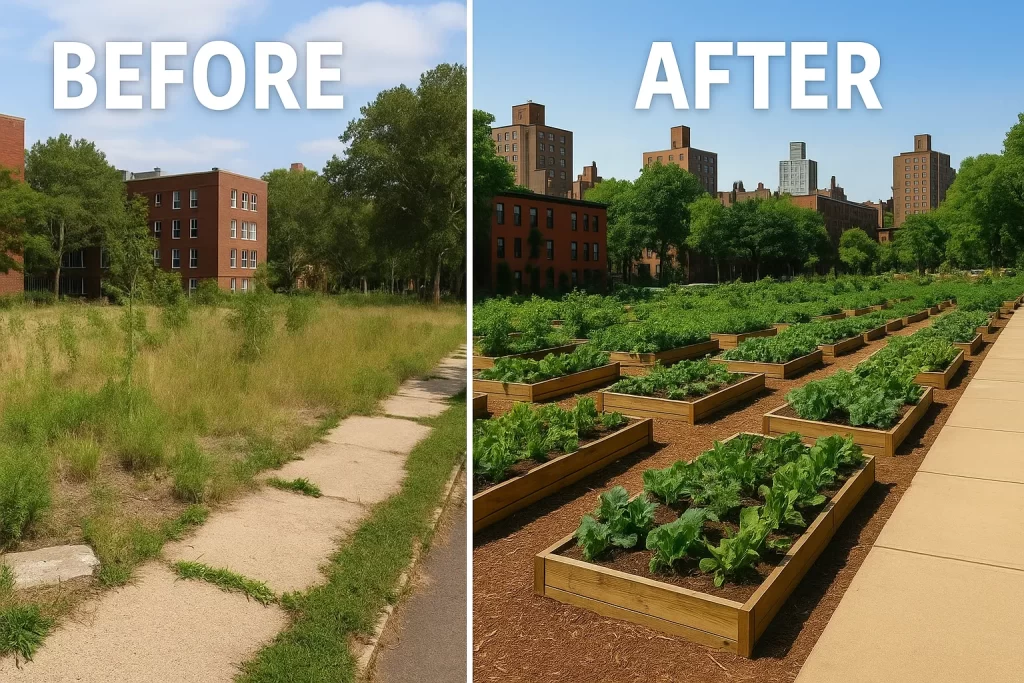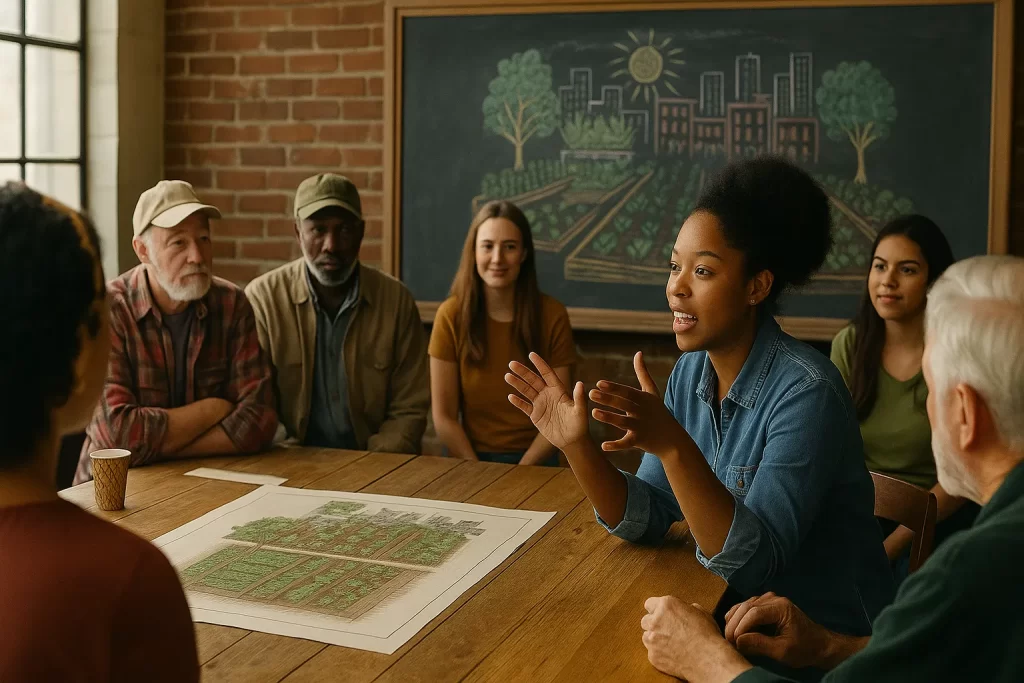
Urban farming—it sounds like the perfect solution, doesn’t it? Turning abandoned lots into lush gardens, filling tables with homegrown produce, and giving neighbors a shared sense of purpose. It’s hopeful, it’s green, and it feels like a win. But here’s the catch: sometimes, what starts as a well-meaning, grassroots effort can have side effects no one planned for.
You’ve probably seen the stories—block after block transformed with planter boxes, murals, and buzzing beehives. It’s a refreshing shift from vacant lots and trash piles. But when these changes draw new interest and investment, what happens to the folks who were already there? Are we really planting solutions—or sowing the seeds of displacement?
The reality is more complicated than the cheerful snapshots. Urban agriculture may help tackle food deserts and create gathering spaces, but it can also make neighborhoods more attractive to outsiders with deeper pockets. Rent can rise, property taxes can spike, and longtime residents can get priced out of the very communities they helped build.
This article takes a closer look at that tension. Is urban farming always a good thing? Or can it, sometimes, contribute to gentrification in ways we need to be more honest about? Let’s dig into what makes urban farming both a hopeful tool and a potential trigger for change—and explore how we can keep it rooted in the right values.
Understanding Urban Farming
At its heart, urban farming means more than just planting crops in city spaces. It involves growing, processing, and distributing food right where people live—in the heart of urban neighborhoods. The idea is to make the most of unused lots, rooftops, and alleyways, turning them into productive, green spaces. It’s about bringing agriculture to the sidewalks, one raised bed or hydroponic setup at a time.
The main goals? To increase food security, make good use of neglected areas, and strengthen neighborhood connections. But there’s more. Urban farming reconnects people with the source of their food—something that’s often missing in fast-paced city life. It also gives folks a reason to gather, share, and learn from one another.
Here’s a quick look at some of the most talked-about benefits:
- Better access to fresh, healthy produce, especially in areas considered food deserts
- Opportunities for neighbors to work together, building trust and local pride
- Eco-friendly practices like composting, rainwater harvesting, and reducing the distance food travels from farm to plate
- Educational value for both kids and adults learning where their food comes from and how to grow it
- A way to beautify and repurpose vacant lots, making neighborhoods feel more cared for and lived-in

The Concept of Gentrification
To really understand how urban farming might tie into gentrification, we first need to get clear on what gentrification actually is. Gentrification is a complicated and emotional topic, and for good reason—it involves a big reshaping of neighborhoods. At its core, it’s a process where previously underinvested areas begin to attract higher-income residents, often resulting in rising property values, shifting demographics, and eventually, the displacement of long-time residents who can no longer afford to stay.
You’ll typically recognize gentrification by a few telltale signs:
- A sharp increase in real estate prices that outpaces local income levels
- An influx of wealthier, often younger professionals who bring different cultural tastes and consumer habits
- The transformation of local businesses—think coffee shops replacing corner stores, or yoga studios where laundromats used to be
- Changes in school demographics, rental listings, and even the types of restaurants and shops that open up
These shifts aren’t just cosmetic. While some people see new investment as a good thing, for many who’ve lived in these areas for decades, it can feel like being slowly pushed out of the community they helped shape. It’s not just about economics—it’s also about identity, history, and belonging. The neighborhood doesn’t feel like home anymore, and the changes can happen so fast that long-time residents barely have time to react.
Intersection of Urban Farming and Gentrification
Urban farming, though beneficial, can inadvertently become a magnet for gentrification. Consider these examples:
Brooklyn, NY
In Brooklyn’s Bedford-Stuyvesant neighborhood, several urban agriculture projects have drawn media attention and philanthropic funding, making the area a showcase for green innovation. These gardens have provided much-needed access to fresh food, especially in places historically overlooked by major grocery chains. Community members have used the spaces for education, celebration, and nourishment, and they’ve even helped lower crime in some pockets by activating previously neglected lots.
But alongside these improvements, rents have climbed, and property developers have taken notice. What began as a grassroots movement is now featured in glossy brochures for luxury condos. Long-time residents have voiced concerns that the greening efforts are less about serving the people who’ve been there all along and more about attracting new, wealthier tenants. According to community organizers, the new influx of resources hasn’t always been matched by input from local voices. Some residents say they feel like guests in their own neighborhood—welcome to admire the planters, but not invited to the table when decisions are made.
This disconnect between vision and reality highlights an ongoing tension: how do we ensure urban farming remains a community resource, not just a tool for neighborhood rebranding?
Atlanta, GA
The Urban Food Forest at Browns Mill in Atlanta is the largest of its kind in the U.S., and it’s built on a promising idea: giving local residents free access to fruits, vegetables, herbs, and nuts grown in their own neighborhood. It’s a space where people can harvest food, take workshops, and connect with nature—all without spending a dime. The forest sits on seven acres of city-owned land and is managed with the help of volunteers and local organizations.
While the benefits are clear—better nutrition, environmental education, and stronger community ties—the ripple effects have raised concerns. Since the project launched, the surrounding area has seen a notable uptick in housing interest and real estate speculation. Some homes nearby have spiked in value, catching the attention of investors and developers.
Community leaders and activists have responded by pushing for specific protections, such as affordable housing measures, local hiring preferences, and land-use safeguards to keep the forest from becoming a selling point for upscale development. Their goal is to ensure that the people who’ve lived in the area the longest are the ones who benefit most—not just newcomers drawn by the buzz of urban greening. The challenge now is figuring out how to scale such efforts without unintentionally pushing out the very communities they aim to support.
Oakland, CA
In Oakland, some real estate listings have featured nearby community gardens as a selling point, promoting the area as eco-friendly and community-oriented. While this sounds great on paper, it can also cause a spike in housing demand—and prices. When homes near green spaces become more attractive to buyers with deeper pockets, long-time residents may find themselves priced out. According to the Urban Displacement Project, showcasing amenities like community gardens can unintentionally contribute to gentrification, shifting neighborhood demographics and disrupting the cultural fabric that made the area special to begin with.
Detroit, MI
Detroit’s Hantz Woodlands project set out to transform blighted lots into green space by planting trees, aiming to beautify the area and deter illegal dumping. But not everyone saw it as a win for the community. Some longtime residents felt excluded from the planning process and worried that the project catered more to outside investors than to local needs. According to reporting from Wikipedia’s entry on Hantz Woodlands, critics raised concerns that the project prioritized land accumulation and aesthetics over community-led development.
This illustrates a tricky reality: urban farming and greening efforts can spark renewal, but if they aren’t built with the community in mind, they risk deepening divides instead of bridging them.

Voices from the Community
Real-world perspectives offer essential insights, especially when they come straight from the folks who live in, grow in, and shape these neighborhoods every day.
- Supporters of urban farming often point to the sense of empowerment and pride that comes from turning an empty lot into a food-producing garden. They highlight benefits like fresh food access, youth engagement, and the revitalization of neglected spaces. For some, it’s a way to reconnect with cultural food traditions and build local economies from the ground up.
- Critics, on the other hand, worry that as soon as these green projects start getting media buzz or attention from developers, they stop being community-focused. Instead, they fear the gardens become part of the marketing for luxury developments. This shift, they argue, can unintentionally push out long-time residents and transform communal spaces into photo ops for outsiders.
Some community members have even expressed concern that decisions are made without truly consulting locals. They want to see more transparency, more grassroots involvement, and safeguards that keep the benefits of urban farming local.
Balanced discussions like these remind us that no two communities are the same—and that real solutions need to be shaped by the people most affected. Nuance matters. A thriving garden isn’t just about what grows in the soil; it’s about who gets to plant the seeds, harvest the food, and stay rooted in place.
Strategies for Equitable Urban Farming
To reap the benefits without the pitfalls of displacement, urban farming initiatives need to be designed with fairness and inclusivity in mind. That means putting the community first—before development plans, funding proposals, or photo ops. The following strategies can help ensure that urban agriculture supports, rather than displaces, the people who live nearby:
Policy Recommendations
- Adjust zoning and land-use regulations to support urban farms that serve the community, not just developers or investors.
- Implement housing protections like rent stabilization or property tax caps to help long-term residents stay put even as the neighborhood improves.
- Encourage public funding for urban agriculture projects that are led by or benefit local residents, with clear accountability and oversight.
Community Engagement
- Start with listening—local residents should be at the center of planning conversations, not brought in after decisions have already been made.
- Offer paid opportunities for locals to take leadership roles in garden management, outreach, and decision-making.
- Celebrate cultural diversity through crops grown, events hosted, and partnerships formed. A community garden should reflect the neighborhood, not overwrite it.
Successful Models
- The Michigan Urban Farming Initiative is a great example of what’s possible when urban agriculture puts residents first. Their work in Detroit goes beyond gardening—it’s about education, access, and community connection.
- Community land trusts are another effective approach. By separating land ownership from market pressures, they allow neighborhoods to maintain control over their spaces. This means the benefits of greening efforts stay with the people who live there, not investors looking to flip properties.
Bottom line? Urban farming should grow more than food—it should grow roots in the community.

Conclusion
Urban farming undeniably has significant potential to both positively transform and challenge communities. On one hand, it breathes new life into forgotten lots, provides access to healthy food, and fosters community pride. But on the other hand, if we’re not careful, it can also speed up neighborhood change in ways that harm the very people these projects aim to help.
That’s why it’s so important to go beyond surface-level planning. We have to dig deeper—just like we do when preparing soil—to understand who’s being served and who might be left out. Gentrification isn’t always intentional, but its effects are real. Rising property taxes, rent hikes, and shifts in community culture can happen fast when a neighborhood becomes more attractive to outsiders.
Keeping urban agriculture rooted in equity means involving residents from the start, listening to their needs, and giving them ownership of the projects meant to serve them. When community voices shape the vision, the results are more sustainable and far more meaningful.
By staying conscious of these impacts and working proactively to create fair policies and open dialogue, we can shape urban farming projects that don’t just plant seeds in the soil—but plant trust, resilience, and long-term opportunity for everyone who calls the neighborhood home.
Call to Action
Support urban agriculture projects that emphasize inclusivity, transparency, and real community participation. These efforts thrive when they are grounded in local leadership and shaped by the needs of long-time residents—not outside investors or short-term trends. Get involved by volunteering, attending planning meetings, or donating to programs that prioritize local ownership.
Also, speak up for smart, fair policies. Advocate for legislation that protects residents from being priced out, ensures green spaces stay accessible to everyone, and holds developers accountable for equitable outcomes. By amplifying community voices and demanding thoughtful planning, we can help make sure urban farming nourishes both the land and the people who’ve been rooted there all along.
FAQ Section
Q1: What exactly is urban farming?
A1: Urban farming involves cultivating, processing, and distributing food in urban areas, aimed at improving food security, sustainability, and community ties. It’s not just about growing food—it’s about transforming underused spaces into vibrant, productive hubs. Whether it’s rooftop gardens, container plots, or aquaponic greenhouses, urban farming empowers communities by providing local food, teaching sustainability, and encouraging hands-on learning.
Q2: How can urban farming cause gentrification?
A2: When urban agriculture improves the look and feel of a neighborhood, it can attract developers and wealthier newcomers. That demand often leads to rising property values and rent, pricing out the very people these green spaces were designed to serve. Without safeguards like rent control or community land ownership, even a small garden can unintentionally accelerate displacement. It’s not the gardens themselves, but how they’re used—or marketed—that makes the difference.
Q3: How can urban farming benefit communities without causing displacement?
A3: Through thoughtful, inclusive planning. That means listening to the voices of long-term residents, involving them in every stage of the project, and ensuring they have a stake in the outcome. Urban farms can remain community assets by tying them to affordable housing policies, creating shared land stewardship models, and providing economic opportunities for locals. The goal is to grow food and stability at the same time.
Q4: Are there successful examples of equitable urban farming?
A4: Yes. The Michigan Urban Farming Initiative in Detroit is a great example. They’ve revitalized blighted land while prioritizing community participation and education. Community land trusts in cities like Boston and Oakland also show promise by keeping land ownership in local hands, preventing it from being flipped for profit. These models prove that with the right structure, urban farming can benefit everyone.
Q5: How can individuals support equitable urban farming?
A5: Start by getting involved in your local community garden or food justice initiative. Attend city planning meetings, ask questions about who’s making decisions, and advocate for inclusive policies that prioritize long-term residents. Support local farmers markets and buy from community growers when possible. If you’re short on time, even sharing posts or donating supplies can help. The more connected we stay to our local food systems, the more power we have to keep them fair, accessible, and rooted in equity.

